Front Matter
Introduction to the Series
Preface
Table of Contents
1. Introduction
2. The Eye
2.1 General
2.2 Eye Model
2.3 Spot-Size Analysis
2.4 The Retina
2.5 Image Quality
2.6 Normal Vision
2.7 Peripheral Vision
2.8 Review and Summary
3. Magnification and Vision
3.1 Introduction
3.2 Near Object Standard
3.3 Loupe Magnification
3.4 Microscope Magnification
3.5 Distant Object Magnification
3.6 Photographic Systems
3.7 Video Systems
3.8 Review and Summary
4. The Magnifier - Design
4.1 Introduction
4.2 The Biconvex Magnifier
4.3 The Doublet Magnifier
4.4 The Triplet Magnifier
4.5 The Symmetrical Two-Doublet Magnifier
4.6 Resolution
4.7 Review and Summary
5. The Eyepiece - Design
5.1 Introduction
5.2 The Generic Eyepiece
5.3 The Huygenian Eyepiece
5.4 The Ramsden Eyepiece
5.5 The Kellner Eyepiece
5.6 The RKE Eyepiece
5.7 The Orthoscopic Eyepiece
5.8 The Symmetrical Eyepiece
5.9 The Erfle Eyepiece
5.10 The Scidmore Eyepiece
5.11 The RKE Wide-Angle Eyepiece
5.12 Eyepiece Focus
5.13 Eyepiece with the Eye
5.14 Review and Summary
6. The Microscope - Design
6.1 Introduction
6.2 Basic System Specifications
6.3 Resolution Goals and Limits
6.4 10× Objective, Starting Lens Form
6.5 New 10× Objective Design
6.6 Adding the Eyepiece
6.7 Performance Evaluation
6.8 Review and Summary
7. The Telescope - Design
7.1 Introduction
7.2 The Astronomical Telescope
7.3 Resolution Goals and Limits
7.4 The Terrestrial Telescope
7.5 Resolution Goals and Limits
7.6 Review and Summary
8. The Borescope - Design
8.1 Introduction
8.2 General Optical Configuration
8.3 Objective Lens Design
8.4 Common Relay Lens Design
8.5 Final Relay Lens Design
8.6 Eyepiece Selection
8.7 Magnification Evaluation
8.8 Review and Summary
9. The Submarine Periscope - Design
9.1 Introduction
9.2 General Optical Configuration
9.3 Objective Lens Design
9.4 Relay Lens Pair Design
9.5 Visual Performance Analysis
9.6 True Resolution Gain
9.7 Review and Summary
10. Biocular Design
10.1 Introduction
10.2 Biocular Eyepiece
10.3 Head-up Display �䠀唀䐀
10.4 Review and Summary
11. Review and of Design Summary Concepts
11.1 Introduction
11.2 The Model Eye
11.3 Model Eye Resolution
11.4 Visual Magnification
11.5 Other Visual Instruments
11.6 Conclusion
References
Index
A
B
C
D
E
F
G
H
I
J
K
L
M
N
O
P
R
S
T
U
V
W
Z
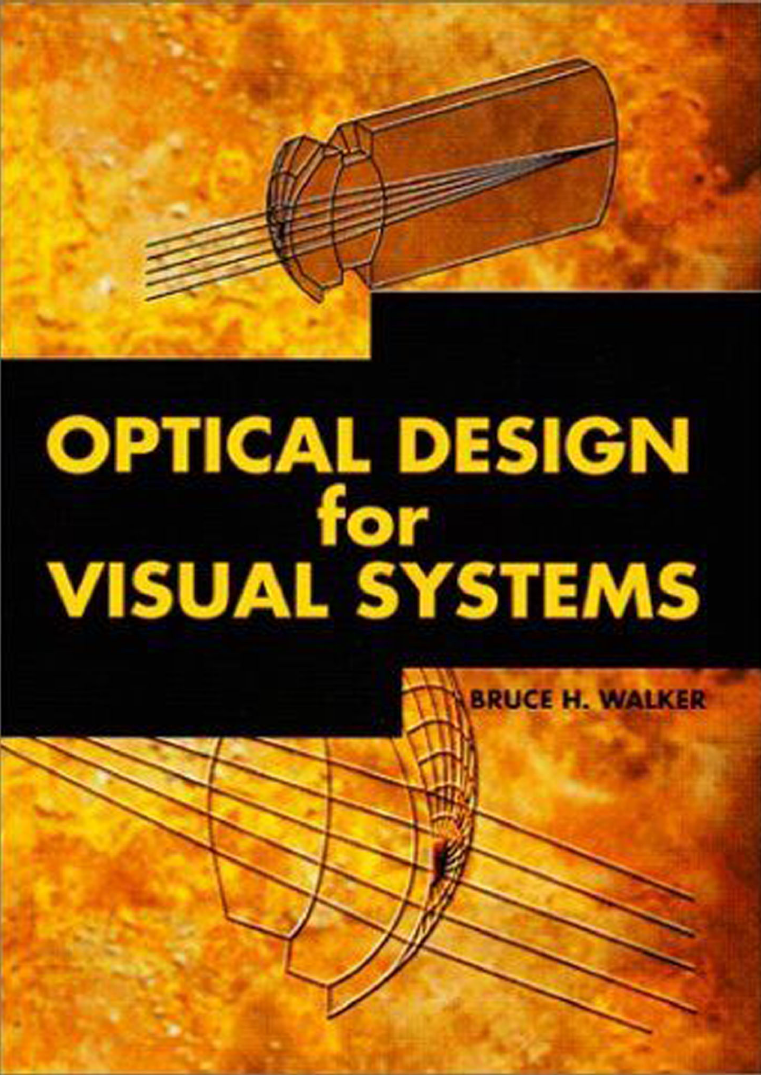
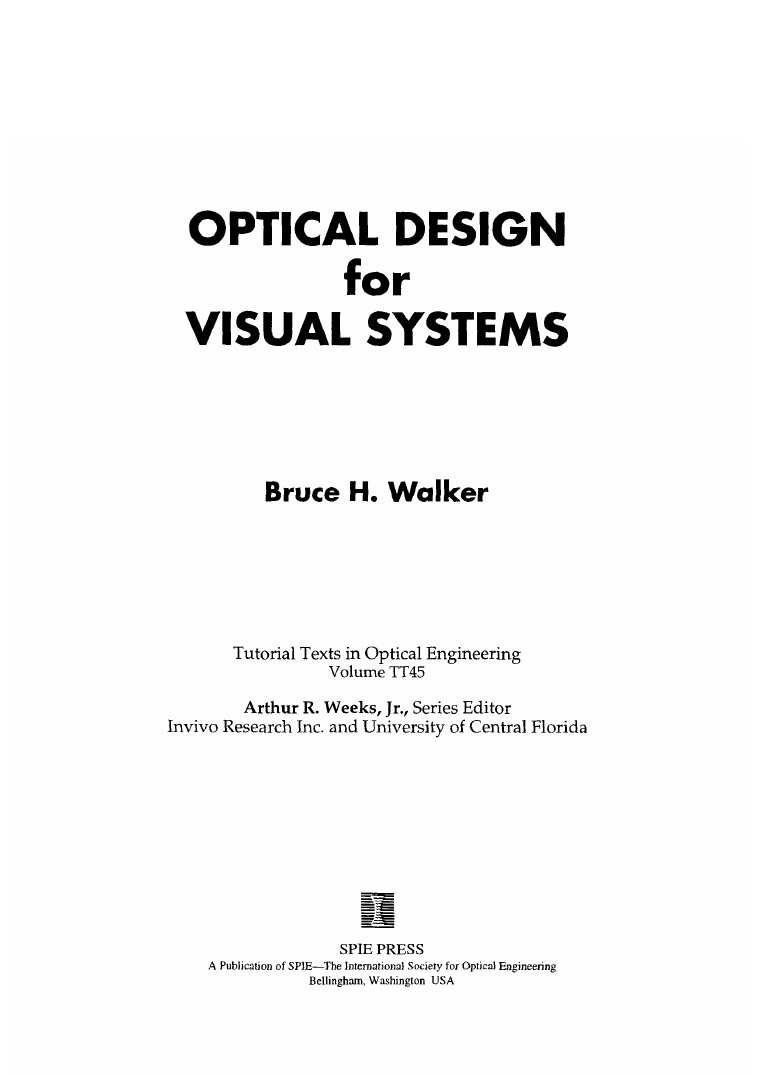


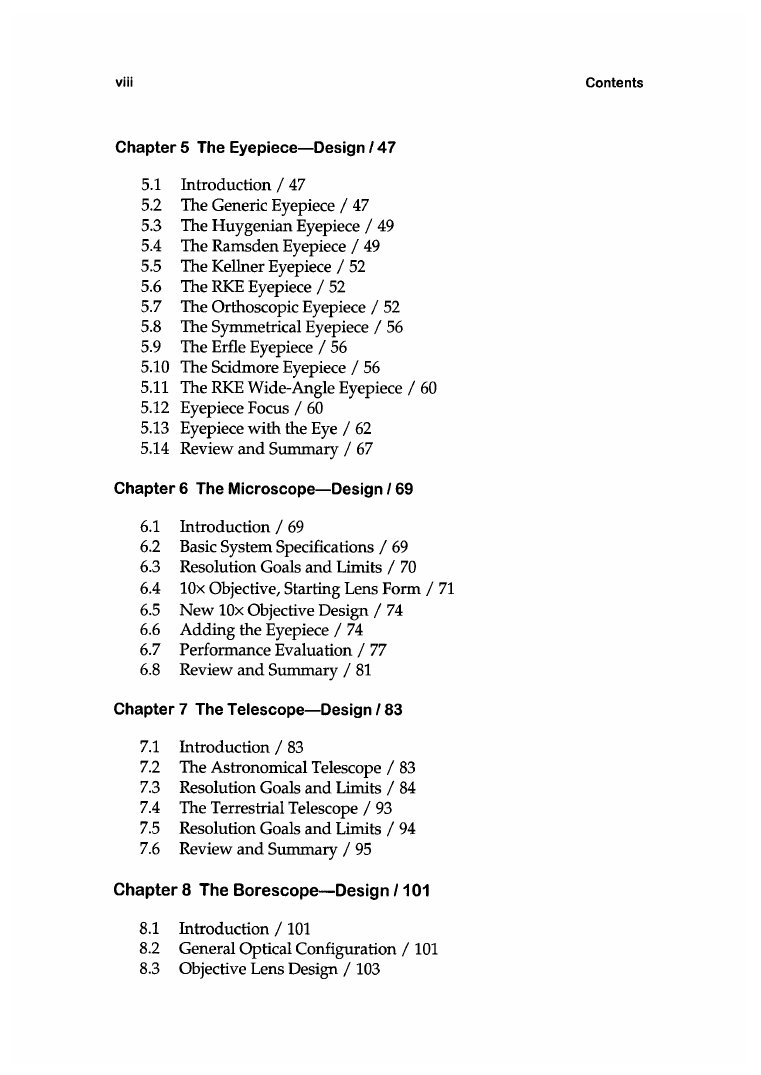
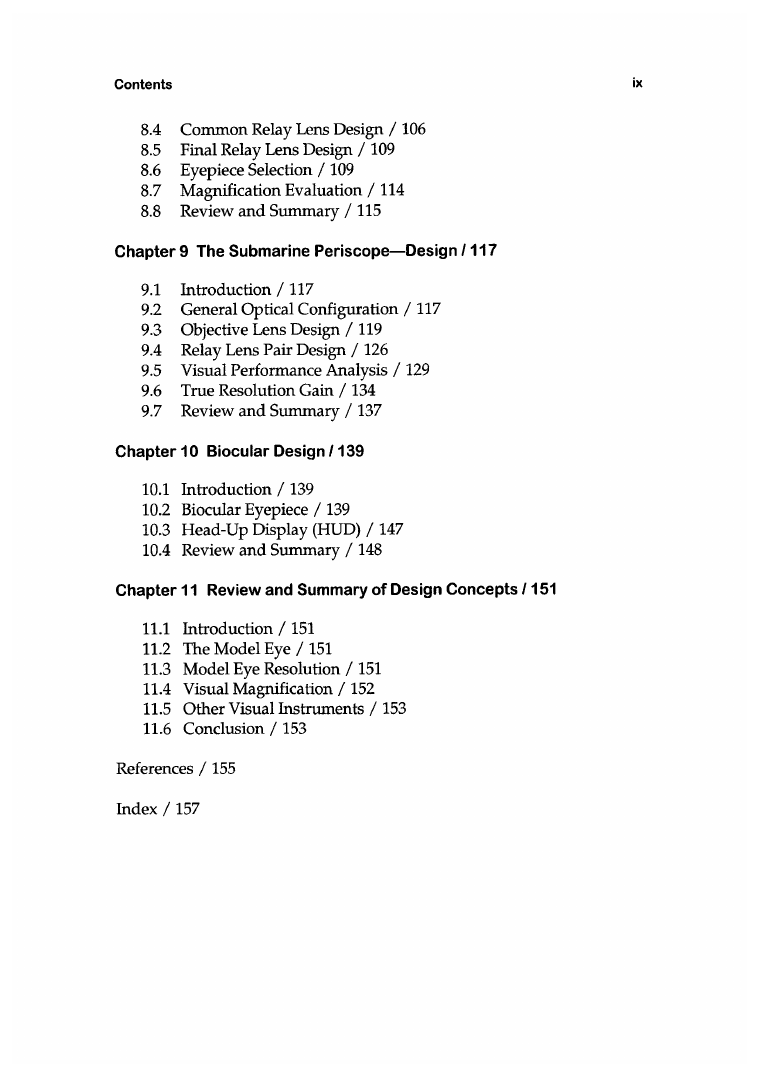
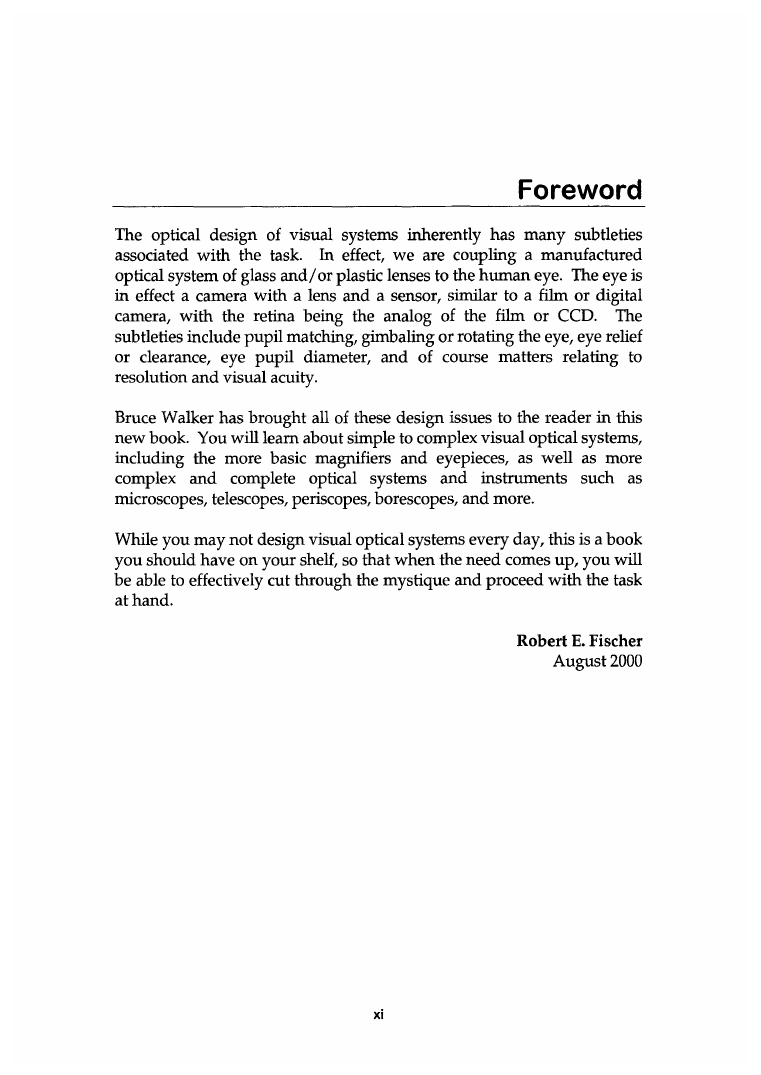
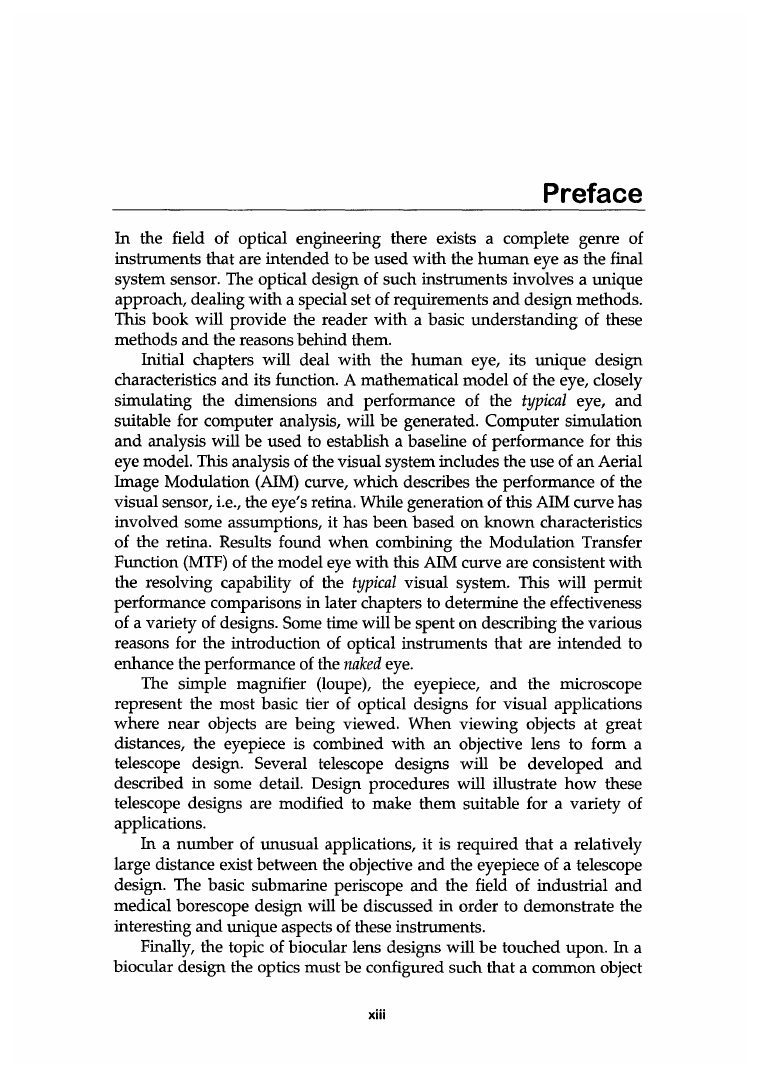








 2023年江西萍乡中考道德与法治真题及答案.doc
2023年江西萍乡中考道德与法治真题及答案.doc 2012年重庆南川中考生物真题及答案.doc
2012年重庆南川中考生物真题及答案.doc 2013年江西师范大学地理学综合及文艺理论基础考研真题.doc
2013年江西师范大学地理学综合及文艺理论基础考研真题.doc 2020年四川甘孜小升初语文真题及答案I卷.doc
2020年四川甘孜小升初语文真题及答案I卷.doc 2020年注册岩土工程师专业基础考试真题及答案.doc
2020年注册岩土工程师专业基础考试真题及答案.doc 2023-2024学年福建省厦门市九年级上学期数学月考试题及答案.doc
2023-2024学年福建省厦门市九年级上学期数学月考试题及答案.doc 2021-2022学年辽宁省沈阳市大东区九年级上学期语文期末试题及答案.doc
2021-2022学年辽宁省沈阳市大东区九年级上学期语文期末试题及答案.doc 2022-2023学年北京东城区初三第一学期物理期末试卷及答案.doc
2022-2023学年北京东城区初三第一学期物理期末试卷及答案.doc 2018上半年江西教师资格初中地理学科知识与教学能力真题及答案.doc
2018上半年江西教师资格初中地理学科知识与教学能力真题及答案.doc 2012年河北国家公务员申论考试真题及答案-省级.doc
2012年河北国家公务员申论考试真题及答案-省级.doc 2020-2021学年江苏省扬州市江都区邵樊片九年级上学期数学第一次质量检测试题及答案.doc
2020-2021学年江苏省扬州市江都区邵樊片九年级上学期数学第一次质量检测试题及答案.doc 2022下半年黑龙江教师资格证中学综合素质真题及答案.doc
2022下半年黑龙江教师资格证中学综合素质真题及答案.doc